Which Looks Better in Hanfu: Square Shoulders or Sloping Shoulders?

Whether watching ancient costume dramas or wearing Chinese traditional dress, when it comes to body posture, sloping shoulders are often mentioned. For example, Liu Yifei has classic sloping shoulders. Nowadays, many people think that square shoulders can really show one’s temperament. So, does the classical aesthetic equal sloping shoulders, and does the modern aesthetic equal square shoulders?
I. Aesthetics Isn’t Binary
Does it mean that square shoulders don’t suit classical clothing? In fact, it’s not absolute. Because the flat cutting structure of traditional clothing allows for a natural allowance around the shoulders, forming a shape. There are two main reasons why many people find it uncoordinated or visually constricted.
Firstly, in terms of body posture, when some people involuntarily puff out their chests, their shoulders become stiff. Also, being overly thin can affect the visual balance, making the clothes look too big for the person. Secondly, there is the issue of clothing cutting. In many TV dramas and movies, three-dimensional cutting is added around the sleeves and shoulders of the clothes, which makes them look constricted.

Let’s make a comparative analysis. When it comes to Hanfu, the flat cutting gives an “allowance” at the position of the sleeves and shoulders. That’s why when people wear Chinese-style clothing, they look “magnificent”. It’s because there is a transition curve around the shoulders, which enlarges the area and softens the shoulder shape, making the upper body look fuller.
Of course, when we talk about flat cutting, it’s not absolute. Since traditional Hanfu also has local three-dimensional cutting adjustments. But generally speaking, the flat cutting structure is the main part.

Although many ancient costume dramas seem to be flat-cut, in order to “fit the body” and “meet modern aesthetic standards”, most of the clothes around the actors’ sleeves and shoulders are three-dimensionally cut. That is, the sleeves are independent and three-dimensional.
So, even for the same actor in different ancient costume dramas, due to the cutting of the clothes, there will be both coordinated and uncoordinated looks, which mainly depends on the meticulousness of the costume, makeup and prop design.

II. Body Posture Is the Key, Not the Shoulder Shape
In addition, the most important thing is the body posture. In fact, we can notice that some actors involuntarily lean forward when standing. In this case, the situation of “rounding the shoulders” will occur. Or when a person “relaxes and slumps”, it will also give the impression of “sloping shoulders”.

Some actors will puff out their chests, suck in their stomachs, and swing their arms backward to create curves. At this time, their shoulders become straight, giving a sense of tension, similar to square shoulders. In fact, different body postures can affect a person’s overall demeanor.
So, rather than focusing on whether the clothes fit well, it’s more about whether the body posture can showcase one’s charm. A posture that makes people feel comfortable is truly crucial.

Most of the depictions of sloping shoulders we’re familiar with come from the images of ladies in ancient paintings. These paintings show that when these women wore various clothes, their shoulders had a “sloping” and downward-curved appearance. I don’t think this is simply due to “classical aesthetics.” Instead, it’s because when ancient artists painted, they aimed to convey the flowing lines of the clothing.
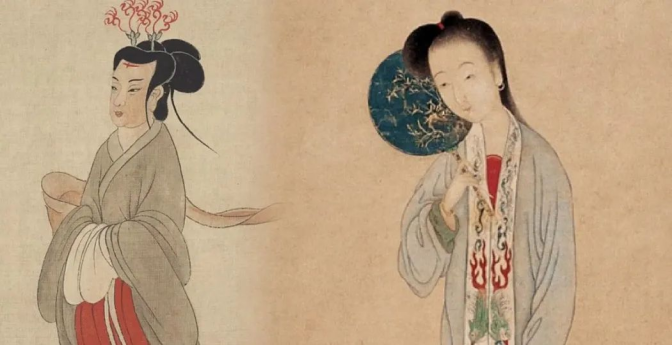
In ancient aesthetics, when it came to traditional Chinese dress, “round shoulders” were once popular. This doesn’t mean that the shoulders were actually round; rather, it was more about describing a person’s “plump” figure, which in fact referred to a relatively healthy body shape. Compared to the thin and angular square shoulders, it was more comfortable and less sharp, which was why many people favored “sloping shoulders” when wearing traditional Chinese dress.
Of course, the preference for a plumper figure might also be related to the low productivity in ancient times. Except for the upper class who had enough to eat, the common people might have lived with an irregular diet, and this might be the reason for their preference for sloping shoulders.


However, different clothes actually match different shoulder shapes. Moreover, most people don’t really have square shoulders. Instead, they tend to have softer and flatter shoulders. For example, Liu Shishi has flat shoulders. They are neither extremely square nor sloping.
But when she wears Tang Dynasty clothing, especially those with a separate upper and lower garment, they suit her very well. Because in the early Tang Dynasty, most upper garments were rather upright, such as half-sleeved jackets and robes. They deliberately created an effect of slightly protruding shoulders.
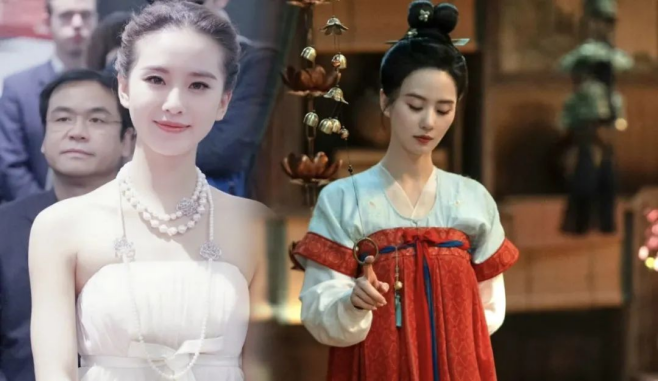
However, when it comes to one-piece robes, such as those in the Qin and Han dynasties styles, flat shoulders and sloping shoulders tend to look more appealing. This is because these types of clothing usually lack additional decorative elements and rely entirely on the shoulders to “shape” the garment. Moreover, with the large surface area of such clothes, any issues with the shoulders become more noticeable.
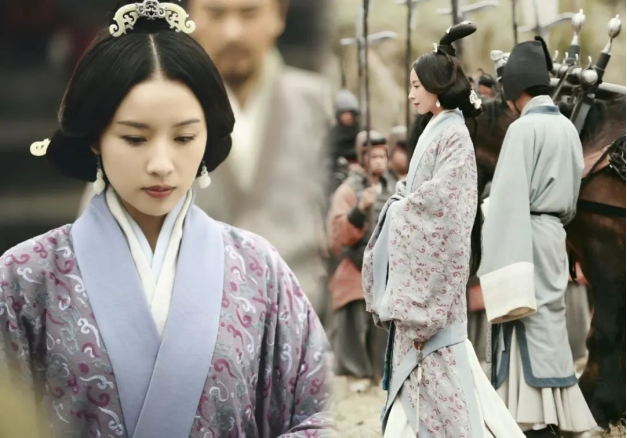
Summary
In conclusion, classical aesthetics emphasized balance, proportion, and a healthy appearance. Otherwise, how would people with square shoulders in ancient times have dressed when wearing Chinese dresses? The reason why many modern square shoulders don’t look visually harmonious is that this shoulder shape often results from extreme thinness rather than a natural, healthy form.
So, instead of debating whether “sloping shoulders are more classical,” it’s better to cultivate good posture that suits you. Expressing elegance through one’s demeanor is far more convincing. After all, shoulder shapes are innate, each with its own unique beauty, while posture and aesthetic sense are entirely within our control. Confidence, without a doubt, is a form of beauty in itself.
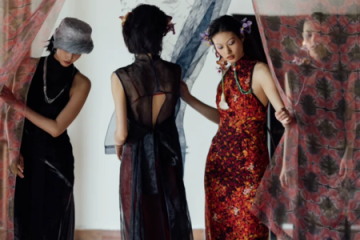
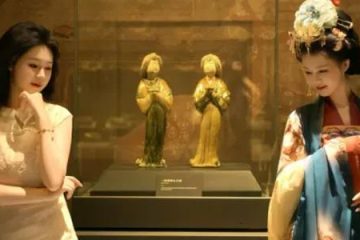
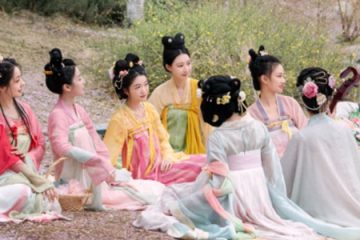
0 Comments